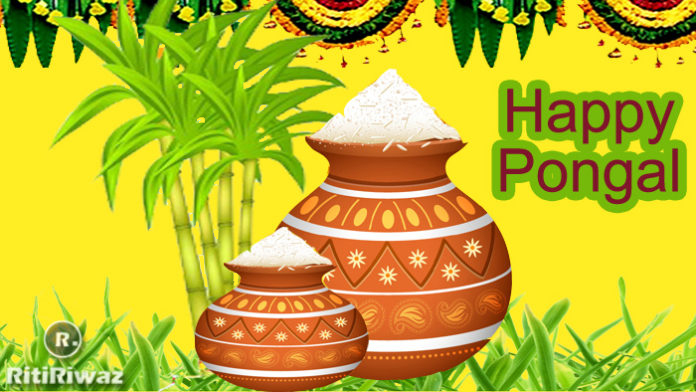Kannada Language | Kanarese
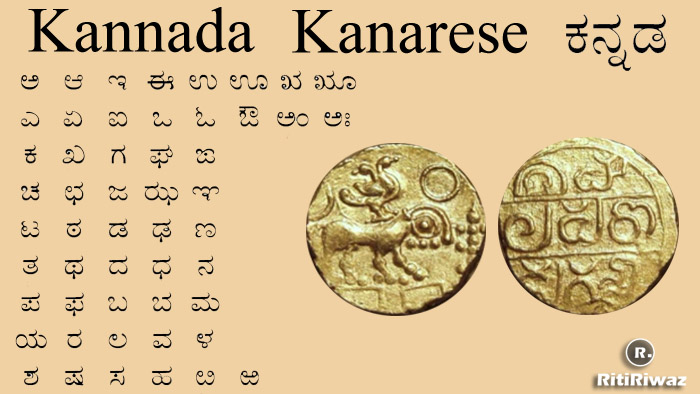
Kannada is a Dravidian language spoken primarily in the state of Karnataka in South India, as well as in border areas of the neighboring states of Andhra Pradesh, Tamil Nadu, and Maharashtra. As with several other Indian languages, Kannada is a complex language that includes words that it may share with other South Indian Dravidian languages, and from Sanskrit, a classical and liturgical language of India.
History
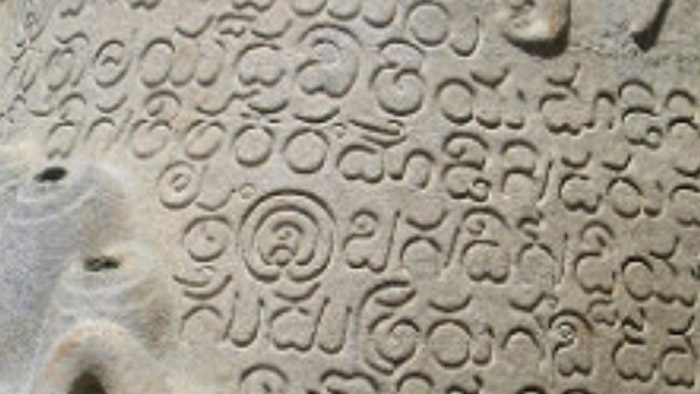
The origin of the Kannada language, also known as Kanarese, or Canarese, belongs to the Southern branch of the Dravidian language family. It is spoken as a first language by 38 million people and as a second language by another 9 million people in southern India, primarily in the state of Karnataka. Kannada is the second oldest of the four major Dravidian languages with a literary tradition.
The Kannada script evolved from southern varieties of the Ashokan Brahmi script. The Kannada script is closely related to the Telugu script; both emerged from an Old Kannarese (Karnataka) script that can be found in the Halmidi inscription, dated c. 450 AD, indicating that Kannada had become an administrative language by this time. The first written record in the Kannada language is traced to Emperor Ashoka’s Brahmagiri edict dated 230 BC. With time, it underwent so many changes in the reign of Sathavahanas, Kadambas, Gangas, Rastrakutas, and Hoysalas. Three historical stages are recognized: Old Kannada (450–1200 CE), Middle Kannada (1200–1700 CE), and Modern Kannada (1700 CE–present).
The early development of the Kannada language was independent of the Sanskrit influence. However, during later centuries, Kannada, like the other Dravidian languages was greatly influenced by Sanskrit in terms of vocabulary, grammar, and literary style.
Kannada Dialects
Kannada is an agglutinating language. That means that grammatical functions are expressed by affixes. The language is divided into four regional dialect groups. The dialect indicates where the speakers come from. Additionally, their social class can also be identified based on their language.
Kannada dialects are mainly differentiated from each other by the fact that they have undergone different phonological changes and sound shifts in evolving from Old Kannada. For example, the word for “to be” iru in Kavirajamarga (the classic variety) has evolved into irda, in the Bidaragannada dialect of Bidara-district ham, in the dialect of Vijapurgannada and dialects of Gulbarga ana. Old Kannada’s hodan (where hoda means went) is the source of hwada in the dialect of DharwadKannada. Old Kannada helu is the source of pelu(p>h) in the dialect of old south Karnataka area elu, and in various southern dialects. Even now in the Mysuru area, it is common to hear “elu or elu” meaning “to tell”.
There is also some distinction between the spoken and written forms of the language. Spoken Kannada tends to vary from region to region. The written form is more or less constant throughout Karnataka. However, the Ethnologue identifies about 21 dialects of Kannada. Among them are Kundagannada (spoken exclusively in Kundapura), Bidara-Kannada(spoken exclusively in Bidara district, Researcher Prof. A. Murigeppa), Nadavar-Kannada (spoken by Nadavaru community), Havyaka-Kannada (spoken mainly by Havyaka Brahmins), Divar Kannada (spoken mainly by Divara community, Researcher Prof. H.M. Maheshwaraih), VTrasaiva-Kannada(spoken by VTrasaiva or Lingayats) AreBhashe (spoken mainly in the Sullia region of Dakshina Kannada), Korach, Korama, Kodava, Soliga, Badaga, Gulbarga Kannada, Dharawad Kannada, Chitradurga Kannada, and others.
All of these dialects are influenced by their regional and cultural background. The dialect of Kasaragodu-Kannada has little Malayalam loanwords, has also been influenced by Malayalam syntax and accent. The same thing happened in Sollapur-Kannada, Aurangabad-Kannada, Pune-Kannada, Sangli-Kannada, Goa-Kannada, Mumbai-Kannada, Kamool-Kannada, Ananthapur-Kannada, Krishnagiri-Kannada, and Coimbatore-Kannada too.
Kannada Alphabets
The Kannada language is written using the Kannada script. The other native languages like Badaga and Konkani are also written using the Kannada script. Contemporary Kannada literature is the most successful in India, with India’s highest literary honor, the Jnanpijh awards, having been conferred seven times upon Kannada writers, which is the highest for any language in India.
Spoken and written Kannada differs from one another. Like many other Indian languages, Kannada has its own writing system. It is a hybrid of an alphabet and syllabic writing. It consists of many round symbols, which is typical for southern Indian writing systems which are classified as an abugida, a specific type of writing system where each letter has an innate vowel. Unlike the Roman alphabet used to write some languages in the West, Kannada’s writing system works differently in that letters are not isolated consonants.
Consonant letters in Kannada each have an innate vowel attached to them, and for other vowels, they change shape. Notice in the chart that each consonant has the innate vowel a [a]. There are also subscript consonant diacritics, which are altered forms of consonant letters placed below or to the bottom right of the letter.
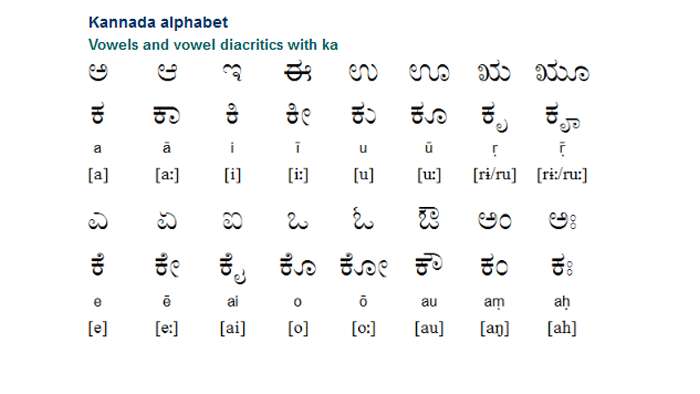
In the vowel diacritics, the letter ಕ [ka] is used as the example letter, and one can see how it changes depending on what vowel is being used in conjunction with it. Each vowel also has a complete form that cannot take diacritics of any kind.
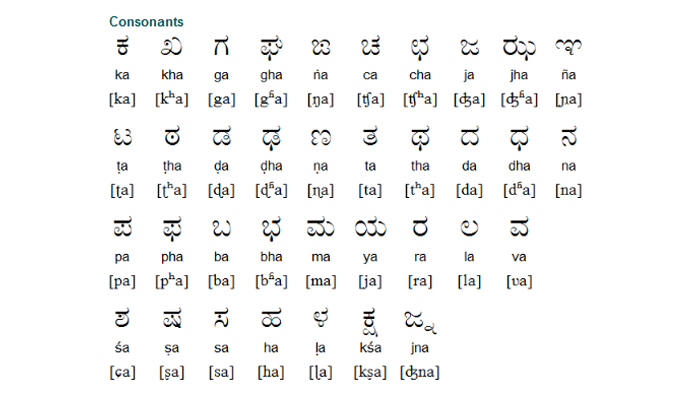
As for consonant diacritics, the chart above shows the most common diacritics that you will need to know, as well as some of the irregularly shaped ones. Most of the consonant diacritics are formed by removing the topmost line and placing it to the bottom right of the letter being modified. However, some are less obvious, including those for t, r, y, n, m, l, ṣ as well as a unique form for the posterior r.
Nouns also belong to one of three genders: masculine, feminine, or neuter. Only people can have gender, which means that even if an animal is female, it is still treated as having the neuter gender, having no changed form. However, there are a few words, derived from the names of certain Hindu deities (which are people and therefore have gender) that have gender, such as Rಯ6 (sūrya – Sun), which is masculine only because the Hindu god of the sun of the same name is male. To pluralize nouns that are not people, append ಗ) to the end, and for nouns that are people, add ಗS, except for TೕUಗ), ಅವSಗ), and ಇವSಗ) which are exceptions. Adjectives do not change based on the case, gender, or any of the criteria according to which nouns change. Adjectives and adverbs (modifiers) in Kannada always go before the noun or verb they
modify, respectively.
Verbs conjugate according to tense, person, and plurality, and gender in the third person singular. Verbs in the present tense can also take a variety of affixes for various auxiliary meanings. In Kannada, tense is primarily contrasted between past and non-past, making the future tense conveyable only through context. There is a separate future tense, but it is found mostly in literary works.
The verb for “to be” (known as the copula) is frequently omitted from sentences that involve “noun is noun” relationships but for “noun is adjective” relationships, the conjugation of the copula is frequently affixed to the adjective, since predicate adjectives do not truly exist in Kannada. It is also helpful to know that Kannada’s basic sentence order is SOV, differing from English. So a sentence like “I kick the ball” in English would be translated roughly as “I the ball kick” in Kannada.





